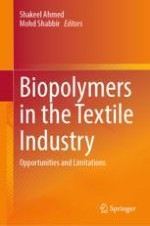2024 | OriginalPaper | Buchkapitel
Ecological Effects of Biopolymers and Their Advantages for Textile Industry
verfasst von : Shumaila Kiran, Fazal ur Rehman, Sadia Javed, Shazia Abrar, Naila Mukhtar, Abdul Moied, Noman Maqsood Khan, Alina Javaid, Zaryab Rashid, Mubashar Hussain, Rabia Nawaz
Erschienen in: Biopolymers in the Textile Industry
Verlag: Springer Nature Singapore
Aktivieren Sie unsere intelligente Suche, um passende Fachinhalte oder Patente zu finden.
Wählen Sie Textabschnitte aus um mit Künstlicher Intelligenz passenden Patente zu finden. powered by
Markieren Sie Textabschnitte, um KI-gestützt weitere passende Inhalte zu finden. powered by
